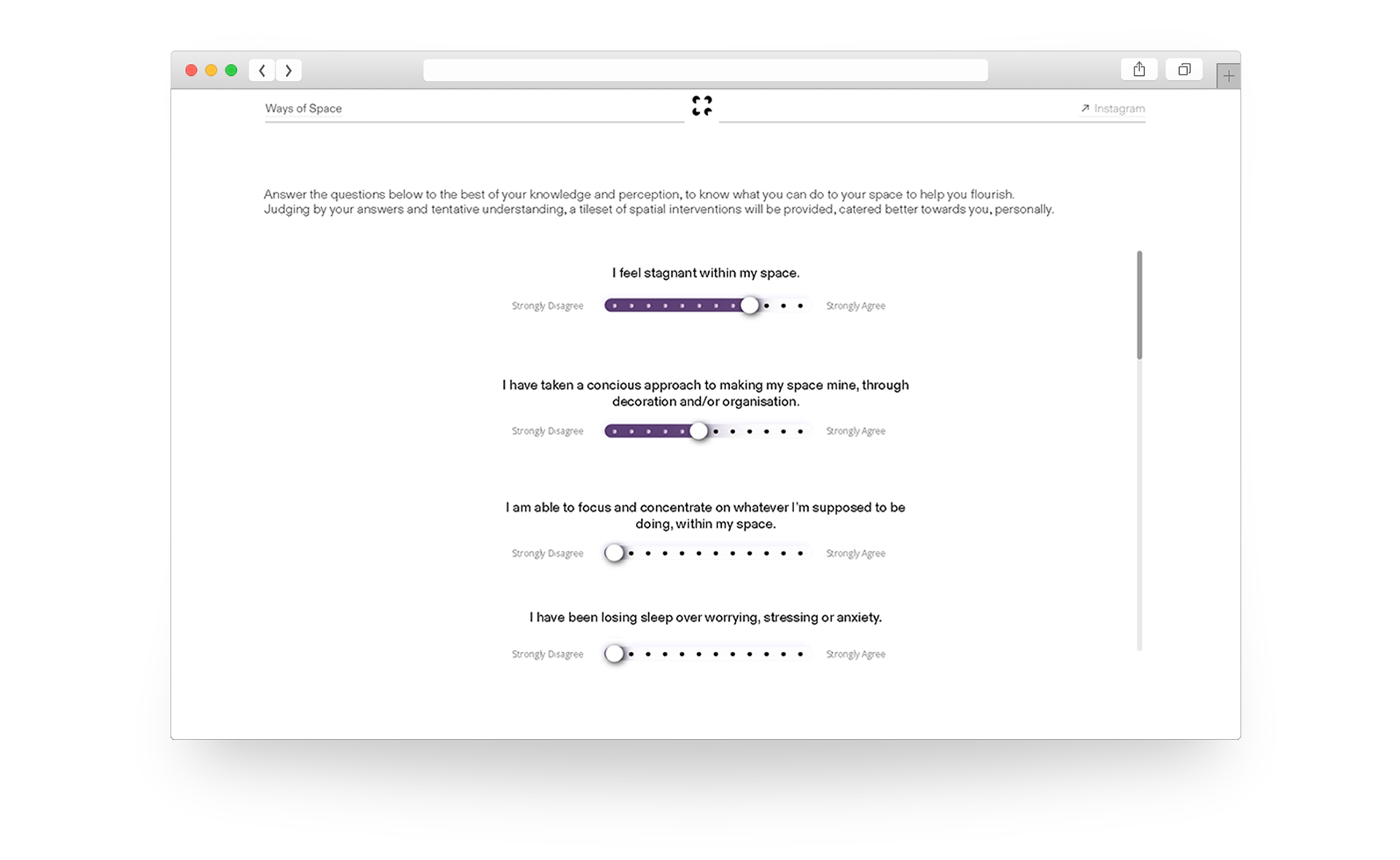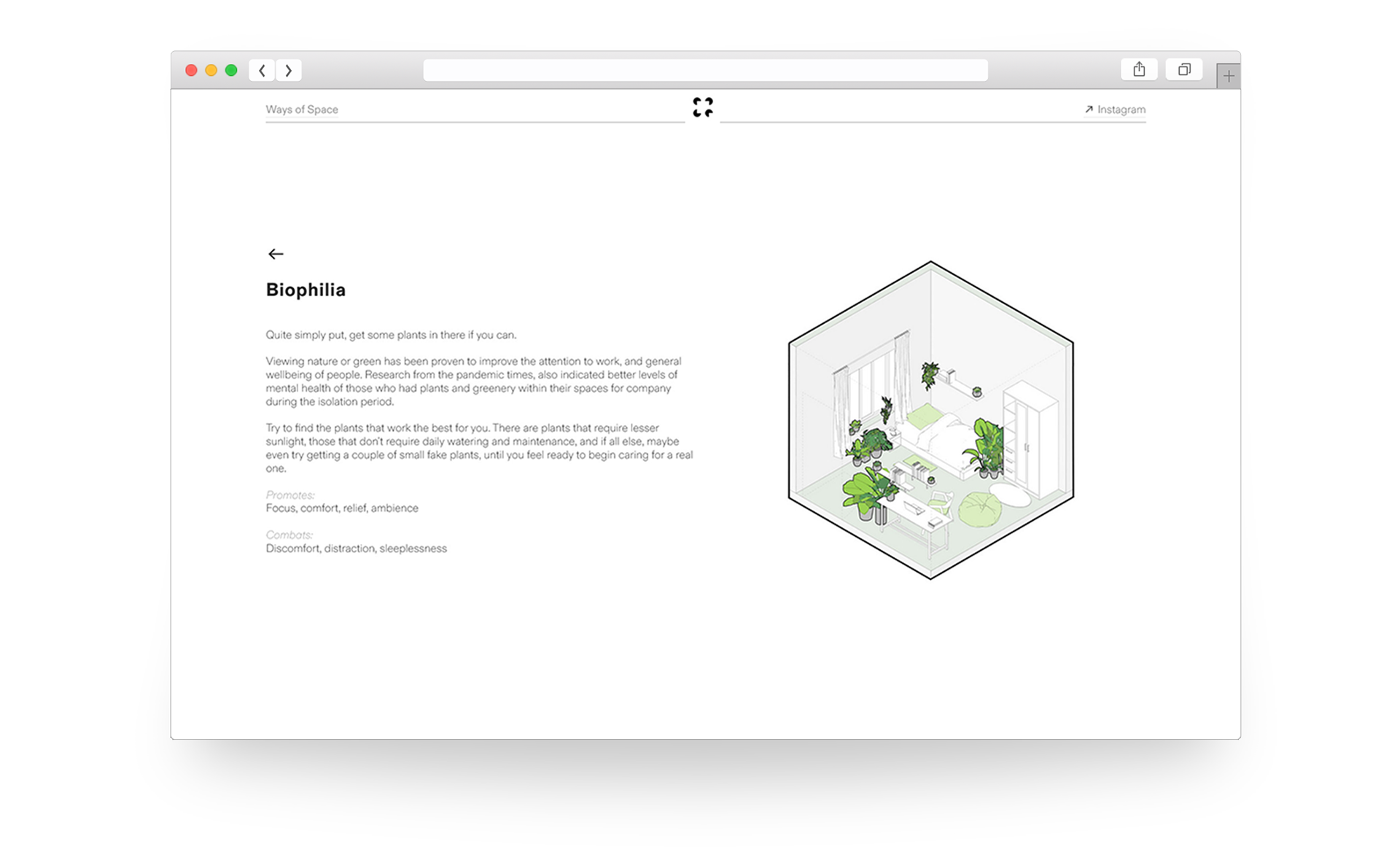Digital Dwellbeing
by The Dwellbeing Initiative
Module: Graduation Project
Mentor: Sweety Taur
Sponsor: NID Ford Foundation Grant
Tools: Adobe Illustrator, Photoshop, InDesign, Figma
Mentor: Sweety Taur
Sponsor: NID Ford Foundation Grant
Tools: Adobe Illustrator, Photoshop, InDesign, Figma
National Institute of Design, India
In the process of articulating The Dwellbeing Initiative, the project eventually took up the form of both a digital presence and a tangible connected set of objects, in addition to the creation of an online Instagram community to drive engagement.
The digital component of the initiative is presented as a website, hosting stories of people's relationship and connection to their spaces by artistic creatives, as well as a collection of spatial interventions sourced from design literature, established practices, and user preferences, that aim to foster a better feeling of wellbeing for the dweller.
The Dwellbeing Initiative website (now on hiatus) was built utilising Cargo Collective↗, allowing me to focus on the research thereby being able to inform, create and ship the site efficiently enough to be peer viewed and reviewed within the time frame of the project. This brought along its own set of constraints as it would pertain to interactivity and aesthetics, but the importance of the experience and journey is maintained as paramount throughout it.
But what were these principles based on? And how did we end up on the ideation and eventual inception of The Dwellbeing Initiative?
The entire research process, through its assimilation, speculation and articulation phases, is detailed out in the project report↗.
Additionally, a copy of the PDF can also be requested by mail.
With the creation of The Dwellbeing Initiative, we hoped to utilize multiple mediums of interaction to be able to aid in the informing and the fostering of spatial belonging amongst people.
Through its multimodal configuration, the project aimed to cater to digital, tangible, and spatial formats.
The Instagram community allows for people to interact with and engage on an almost instantaneous basis, presenting itself as both a space to receive feedback on the work and content shared, as well as a place of data accumulation and correspondence.
Looking ahead, the Instagram page could serve as a space to share people's artworks as well as posts by other creatives and agencies working in the same field - a hotbed of information, almost. Additionally the page could also look to engage with people through thematic image sharing, question posing, and collecting spatial ideas through crowdsourcing.
Situating a Digital Repository
In establishing the website in its current form, a rough framework was first established to understand how the user will experience it. This information architecture served to help map the journey of people and make sure that they are able to experience all that is offered through this medium.
Considering the timeline of the project, and it being a individual initiative during its process, a website builder was used to efficiently translate the experience to its current form.
The website, from the opening home page as the central hub, will lead people into four pages through the following links:
- Spatial Stories, the online exhibition space of art and stories by creatives
- Ways of Space, with both a collective ways of spatial living, and Find My Way
- About page, hosting the process followed and references
- Instagram page, to connect with the community
- Ways of Space, with both a collective ways of spatial living, and Find My Way
- About page, hosting the process followed and references
- Instagram page, to connect with the community
All the content shared on the website is free to be utilized and reshared as required for non-commercial reasons.
Spatial Stories
The Spatial Stories is an online exhibition / repository of people’s relationships to their
spaces, what it means to them. Initially, this repository is in the form of a curated set of art, paintings, comics, journals, renders, videos, photo essays, etc that explore the relationship between people and their spaces.
spaces, what it means to them. Initially, this repository is in the form of a curated set of art, paintings, comics, journals, renders, videos, photo essays, etc that explore the relationship between people and their spaces.
The themes of the stories served as topical representations, with relevance to both the ongoing pandemic as well as people's general understanding of their spaces. This helped provide a varied set of stories, across both photo-journals as well as artwork by creatives and artists.
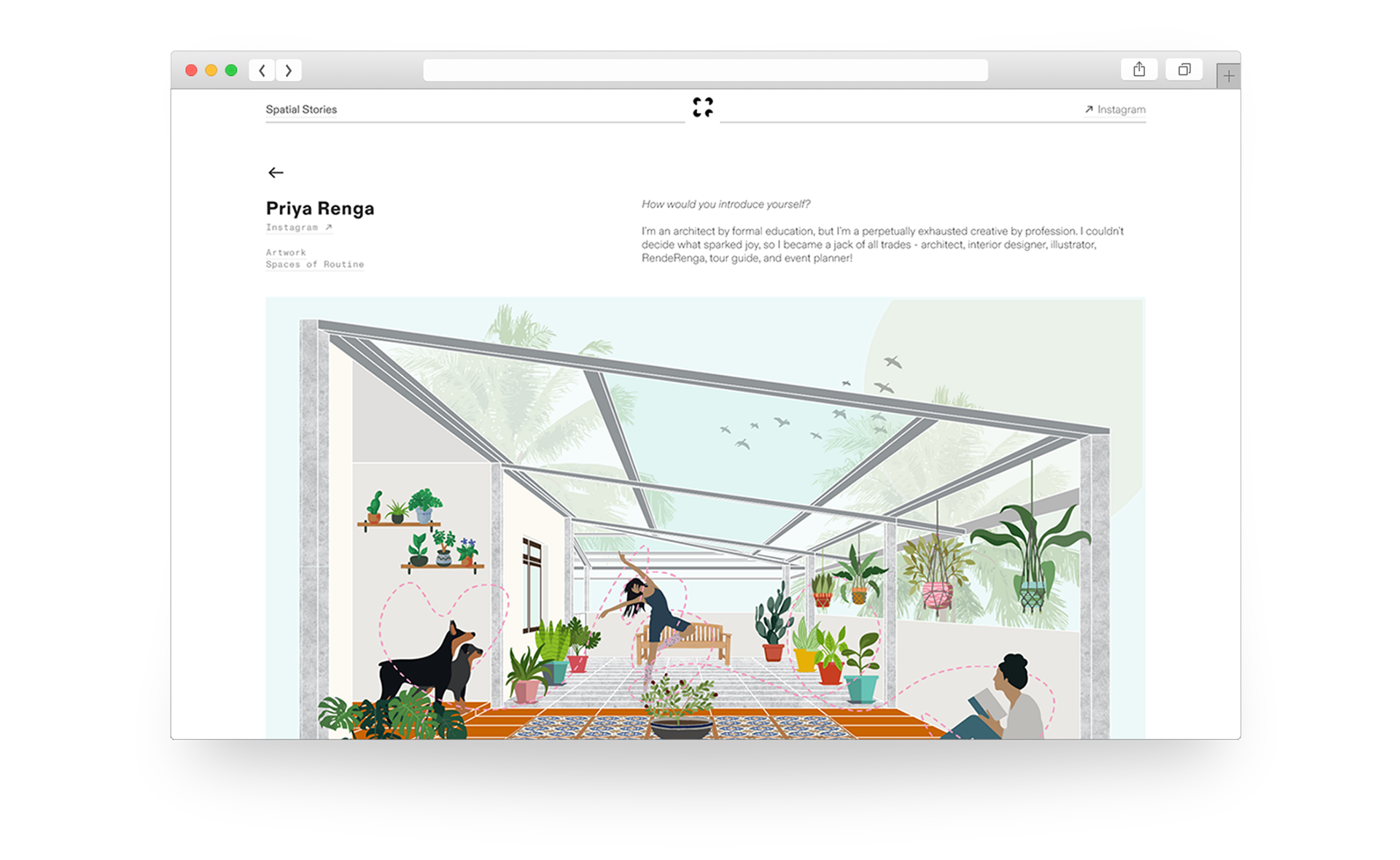
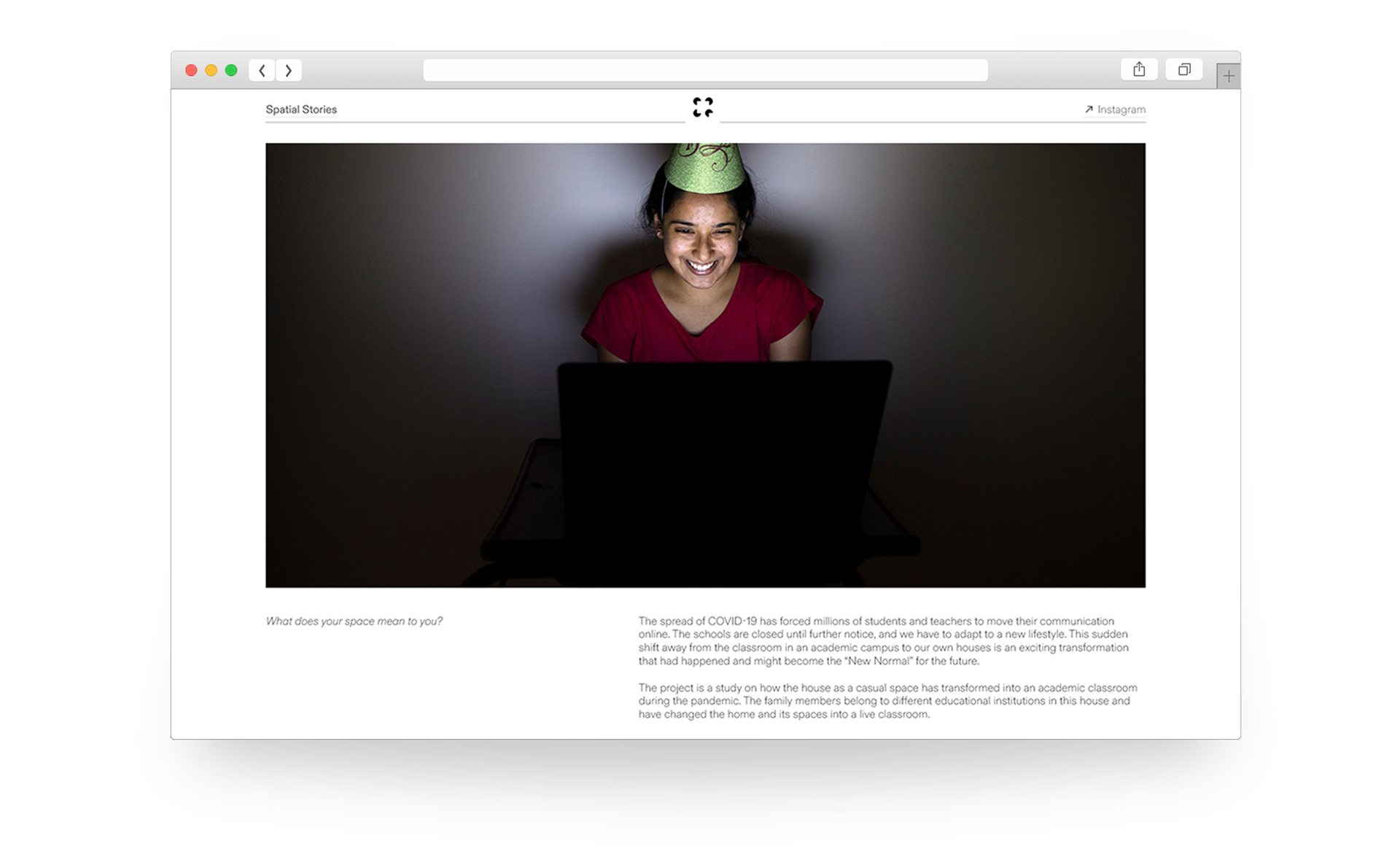
The Ways of Space
The Ways of Space is the initiative's answer to our founding principle of wanting to inform people about the ways they can modify and shape their spaces to aid in their living and wellbeing, by looking to established spatial theory and intervention techniques, known by designers, professionals and even other people.
The Ways of Space are presented as both a growing collection of interventions, along with a system wherein users are able to answer a questionnaire - which would help in generating
their own custom collection of possible ways, catered to them.
their own custom collection of possible ways, catered to them.
The Initiative is also currently working to establish a format to question the user, by way of a simple questionnaire or survey, so as to gauge their wellbeing within their space, and look to create their own mosaic of ways that they could attempt within their spaces.
These ways could be unique to the user, and also continuously user rated to publicly inform of the effectiveness of these techniques. This would help maintain and update the list of ways as they relate to their efficacy in helping the user to feel better and generate a greater sense of wellbeing within their spaces.
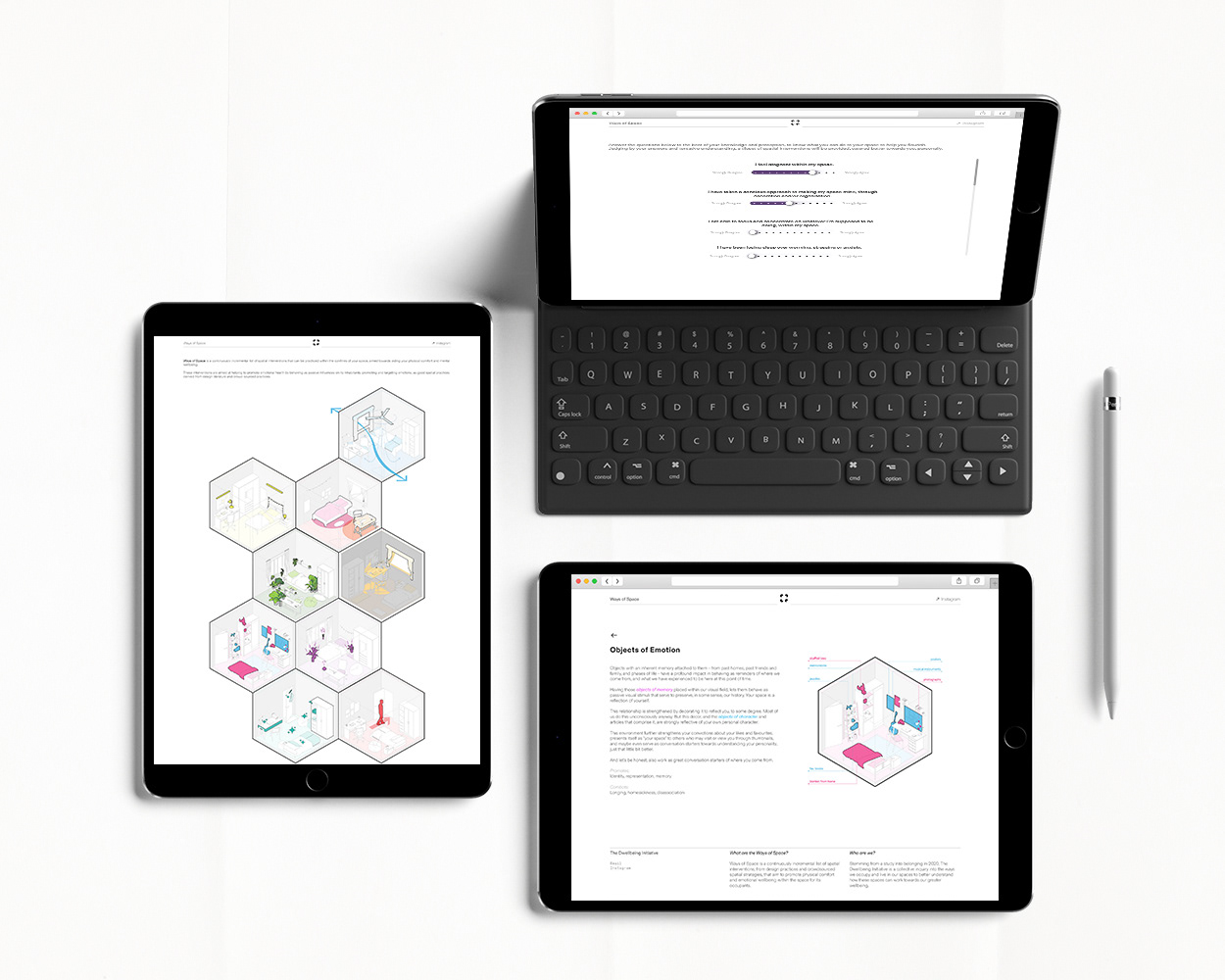
To aid in the conveying of the collated info, illustrations were also added to serve as a visual companion to the ways, accompanied by a general description of what the way entails, along with the emotions and feelings they would promote as well as tackle.
These graphics would help as visual examples, as opposed to just textual descriptions, so that it would be easier to point out specific objects, materials, techniques, etc within the spaces by example to help better define them. However they would still have to be generic to a certain degree, as what constitutes the objectification of emotions or ways will vary quite differently from person to person and will have to treated as such, to allow for their own expression.
